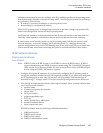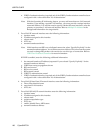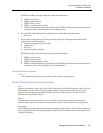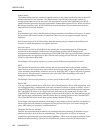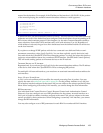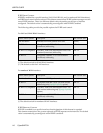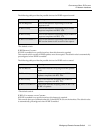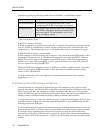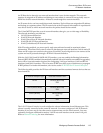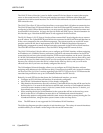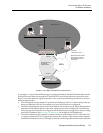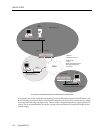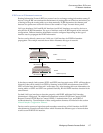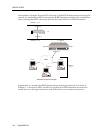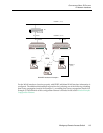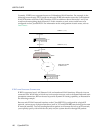
Workgroup Remote Access Switch 113
C
ONFIGURING
B
ASIC
IP R
OUTING
IP Network Interfaces
An IP Host device has only one network interface that it uses for data transfer. This network
interface is assigned an IP address and belongs to one subnet. A remote IP host typically uses an
ISDN line for this network interface. All data is sent through this network interface.
An IP router device can have multiple network interfaces. Each of these are assigned an IP address
and belong to a separate subnet. The IP router looks at the IP network information in a packet and
uses this to decide to which network interface the packet should be forwarded.
The CyberSWITCH provides a set of network interfaces that give you a wide range of flexibility.
The network interfaces provided are:
• LAN IP Network Interface
• WAN IP Network Interface
• WAN (Direct Host) IP Network Interface
• WAN (RLAN) IP Network Interface
• WAN (UnNumbered) IP Network Interface
With IP routing enabled, you must specify each network interface and its associated subnet
information. This allows the System to route IP data between network interfaces. In this mode, IP
Hosts and IP routers can connect to the system. Even MAC layer bridge devices can connect to the
system and use IP protocols through a IP RLAN Network Interface.
With the LAN, WAN and WAN(RLAN) IP interfaces, you may enable the Routing Information
Protocol (RIP). If RIP is enabled (automatically enabled with new installs; not enabled in upgrades),
there will be extra information required for configuring LAN type interfaces (LAN and RLAN
interfaces) and WAN interfaces. This is because IP RIP uses these types of interfaces to propagate
IP RIP packets. For further information, refer to the section IP RIP and the IP Network Interfaces.
The following table provides the IP Network Interfaces and the associated remote devices that use
these interfaces.
The LAN IP Network Interface is used to define the subnet information for an Ethernet port. This
subnet is usually connected to the central IP network. You must configure a LAN IP Network
Interface if you have any devices that need to communicate over the local network. You may
optionally configure additional secondary LAN IP network interfaces on the same LAN port.
Refer to Network Flattening for more information.
IP Network Interface Type Associated Remote Device
WAN IP Host (RFC1294)
PPP
WAN (Direct Host) IP Host (RFC1294)
PPP
WAN (RLAN) HDLC Bridge
PPP
WAN UnNumbered PPP



